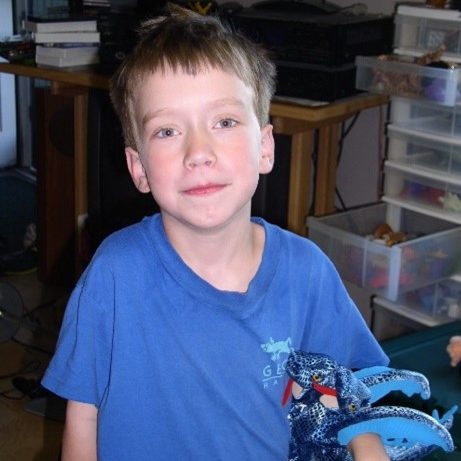Ty was born in October of 1996. He was a beautiful baby that appeared perfectly healthy at birth. Unbeknownst to Ty’s parents, Ty was born with Niemann-Pick Type C (NPC) disease, a slowly progressing but fatal neurodegenerative disease. There was no newborn screening for NPC disease in 1996 and there is still no newborn screening for NPC disease today.
For years, Ty’s family searched for answers for his symptoms and constantly advocated for his medical care. Ty finally received his NPC diagnosis from a neurologist in 2005 when he was 8 years old. This genetic disease that would rear its head as Ty got older – progressively stealing away his abilities to walk, speak, eat, and breathe. NPC would eventually kill him in his early 20s.
While Ty’s disease was progressing, his parents found pulmonologists, physical therapists, occupational therapists, special education teachers and multiple caregivers to help care for Ty’s medical needs.
Ty’s parents eventually got in touch with researchers studying the cellular biology of NPC. The researchers found that a medicine called Zavesca, which reduces cell cholesterol and improves the living conditions of NPC patients.
The medicine was not affordable – $500,000 a year. Zavesca had been through clinical trials in the United States, however it was not approved specifically for treating NPC. Because of this, Ty’s insurance company refused to pay for Zavesca. Ty’s parents had to fight for years to get them to pay – all the while supporting their son’s intensive treatment.
Ty’s parents appealed their insurance company’s denial of coverage for the medicine. They provided letters from medical experts explaining how beneficial the drug was, they joined discussions with the pharmaceutical manufacturer, and, finally, they contacted their family’s employer group requesting help in accessing the medicine for Ty. After two years of negotiating for this medicine, they were finally able to get the medicine covered by the company responsible for its massive cost – the drug manufacturing company covered the 25% copay, and insurance paid the remaining 75%.
Late into his battle with NPC, Ty enrolled in a clinical trial of a new treatment for his condition. Ty’s family and care team were uncertain of improvements, if any, the drug would have in Ty’s health. Ty and his family found themselves flying from Seattle to Chicago every 2 weeks for treatment. But the trial wasn’t solely about Ty’s health. It was more than that – Ty enrolled to help get the drug approved, so no other child would have to face NPC disease without treatment.
There are 7,000 rare diseases affecting 25 – 30 million Americans, many of which are children just like Ty. The cost of medicine is incredibly high for these patients. According to the Harvard Business Journal, the average drug cost for a rare disease is $118,820 per year. If a single drug were approved for 10% of rare diseases, the total would exceed $350 billion annually, more that 10% of the total amount that America spends on healthcare.
Ty’s family continues his legacy by continuing to advocate for rare disease treatments, access, and affordability. If access to the medicines and affordability of the medicines do not improve, children like Ty do not have hope for a better quality of life.
